

Cartagena de Indias
10° 24.53 N 075° 32.50 W
| Page 1 of 2 |
11 July 2007 to 24 August 2007 |

Landfall Columbia. After 1442 Nautical miles with tacking, we made the 1200 mile trip to Cartagena and arrived at daybreak.
We did two things differently this time. Firstly we have installed an AIS receiver. This stands for Automatic Information System, its basically like a squawk-box on aircraft, or an information transponder. Ships larger than 300 tons must have it installed, and it sends information like course, speed, heading, rate of turn, position, destination, MMSI number, name and callsign etc. We have multiplexed this with the GPS signal and it is fed into the navigation computer. This gives us very accurate CPA and TCPA calculations and is a great accessory to RADAR. The second thing we did differently was to use the services of a weather Guru. We chose Chris Parker, not only because of his professional manner on the radio, but also for the accuracy of his forecasts, and the timely arrival of the emailed synopsis. If you want to find the best weather information available today I suggest you find Chris at http://www.mwxc.com

Dugout canoes with outboard motors, against a backdrop of Spanish Colonial ruins. We were in South America again!

Fishermen haul their nets ashore under palm trees

This man poling himself along, a better option in current.
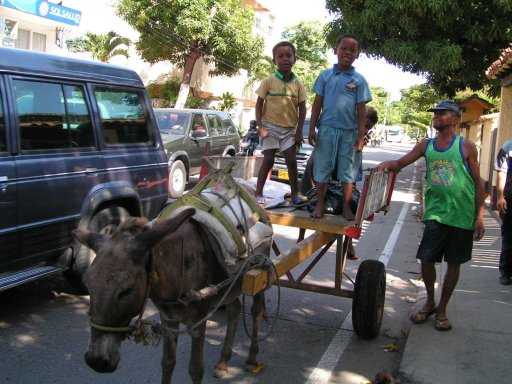
As Liz's interest in photography expands, you will see more photos that are very artistically framed, and some abstract works. Also Laura, till now the photographer might make some guest appearances in FRONT of the lens.

Some street scenes in Cartagena, here men take a break with a refreshing drink from one of the thousands of street vendors.

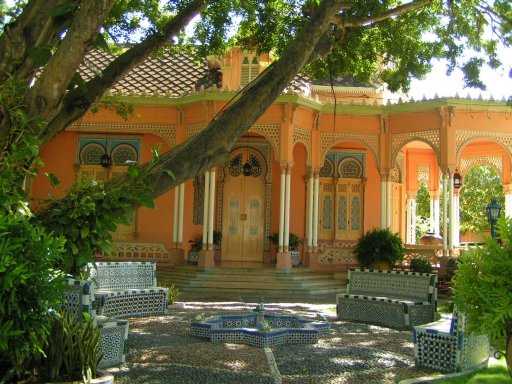




This is the "Torre del Reloj", In years gone by it was protected in turn by a drawbridge, and was the main harbour access for the city. That explains why the Customs building is right here too.

There are many 2nd hand booksellers all over the streets.

This is the "Portal de Los Dulces" literally opening of sweeties.

And in front of the sweeties, was this young boy flying his "Cometa"

Museo del Oro Zenu
One of the fascinating places we visited was this museum. Here we saw gold work from the pre-Spanish times, learnt how the Indians were masters of their land, taming huge areas of floodplains for irrigation and transport. They had a vibrant economy, arts and culture. They believed in the circle of life and the dead were often buried with their gold and riches including figurines of pregnant women symbolising fertility and rebirth. Their goldsmithing was well established and is dated to 500BC. This was their downfall, and soon the graverobbers came, killed the men, interbred with the rest and destroyed a whole culture in the name of religion. These last few remaining examples of gold work by the Zenu, Uraba and Choco is all that was not melted down into simple ingots and transported to the courts of Europe. These are neck pendants. To find our more about this culture and the museum itself, please visit MUSEO del ORO ZENU

A beaten gold breastplate which predates the filigree or lost wax methods.

A figurine of a Shaman, or medicine man. Note the Jaguar teeth, and on his waist a gourd for the Coca leaves.

Nose rings, earrings and other jewelry. A rich person might have been buried with this pot of gold right under the body.


Just a few shots of scenes in the Old City.

The square (triangle) outside the Naval Museum.

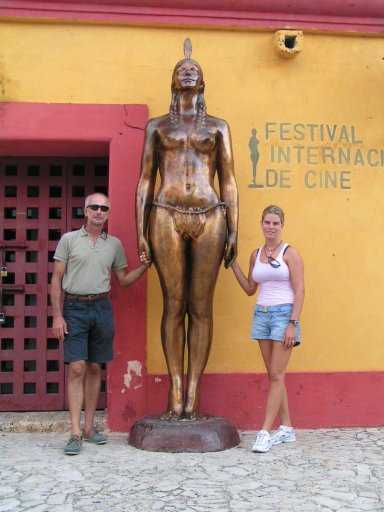
"La India Catalina" who served as an interpreter to the conqueror Pedro de Heredia. This monument is a tribute to the Indians who lived here before the Conquistadores. She is usually on a plinth in a square, but we think she is standing here for refurbishment closer to ground level.

Cobbler in the newer part of town, we had our windlass motor rewound opposite this shop, and he resoled a pair of sandals for us too.

We also visited the "Palacio de la Inquisicion", and there were a few gruesome displays. We do not want to show them all.
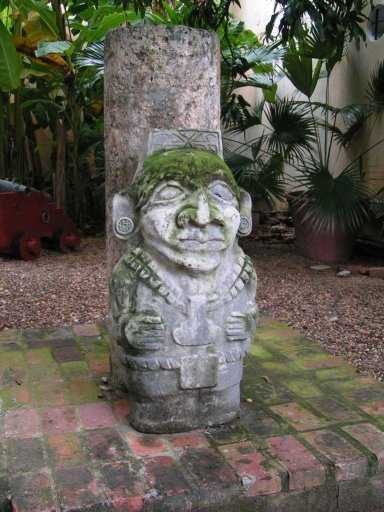
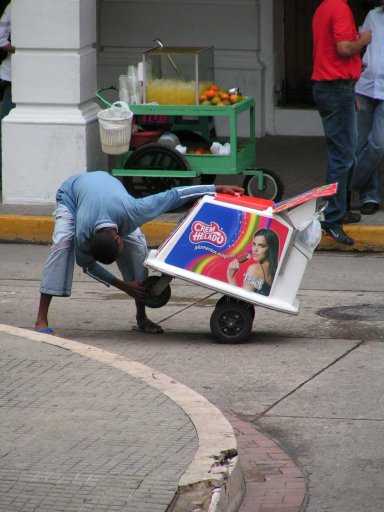
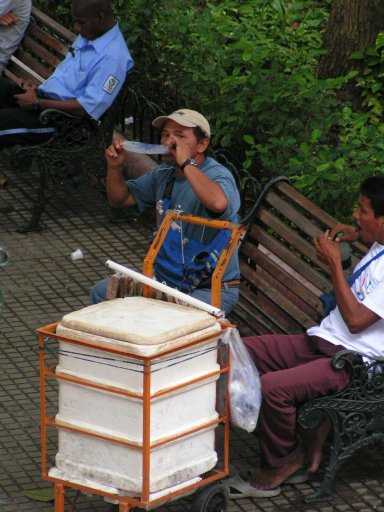
Some more scenes in and around Cartagena, just the local people in normal life. You can get a good feeling for the peace that reigns.
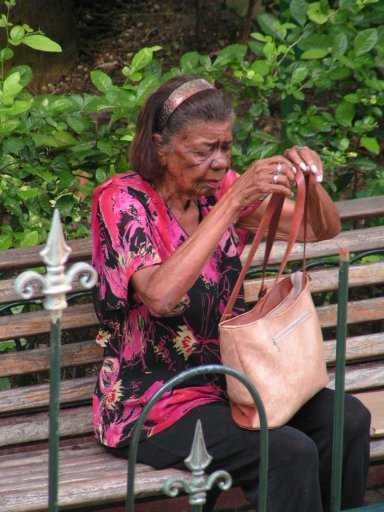
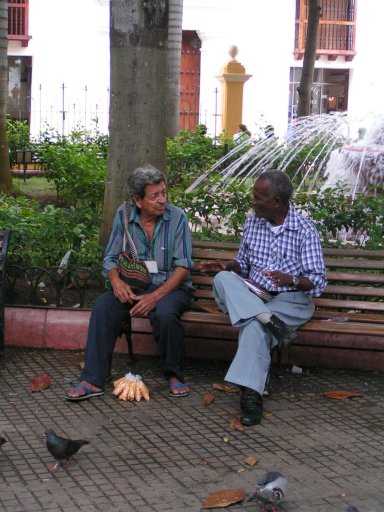
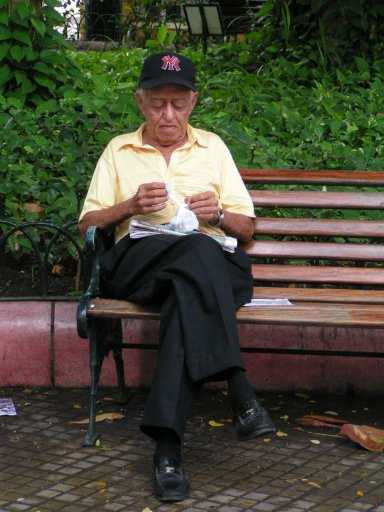
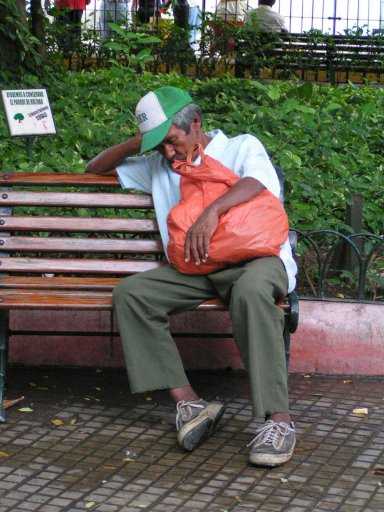
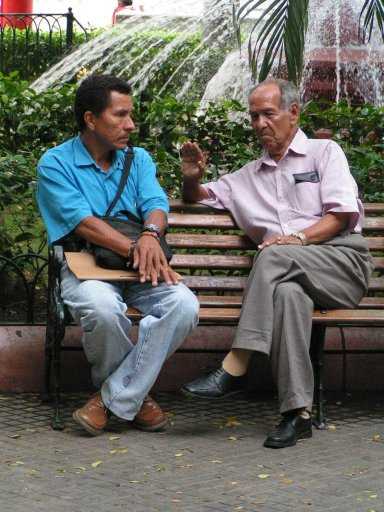
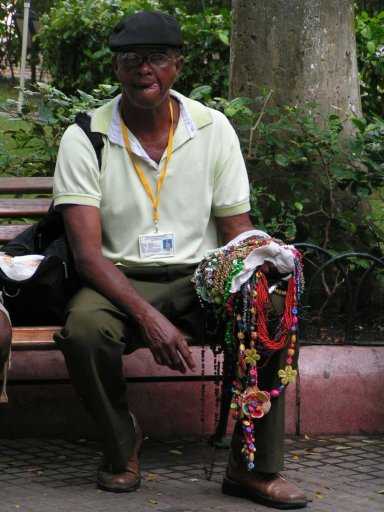
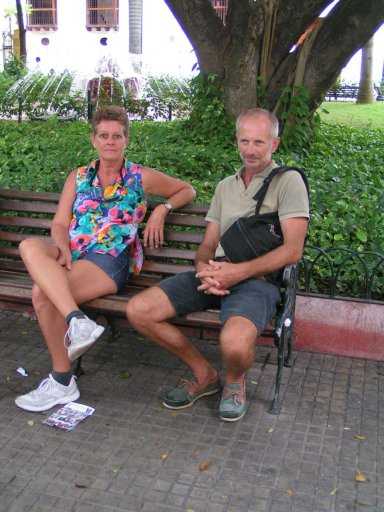
Y las turistas, tambien, descansarle como los Cartageneros.

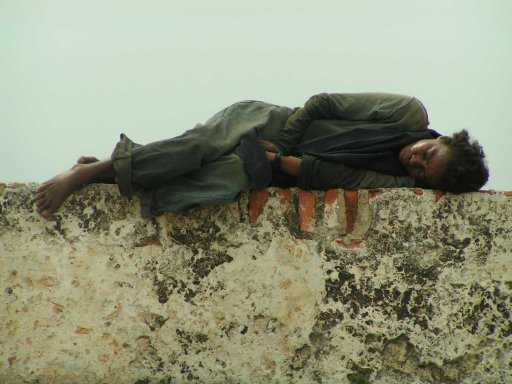
Sleeping on the wall.
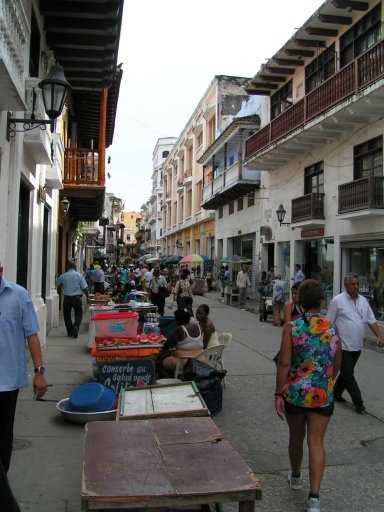
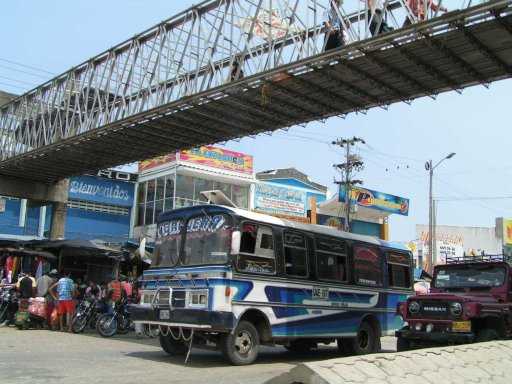
Typical of South America, decorated busses and trucks. Traffic here is somewhat reminiscent of Brownian Motion, appearing to all as completely random movement, however all seem somehow to generally go in the right direction.
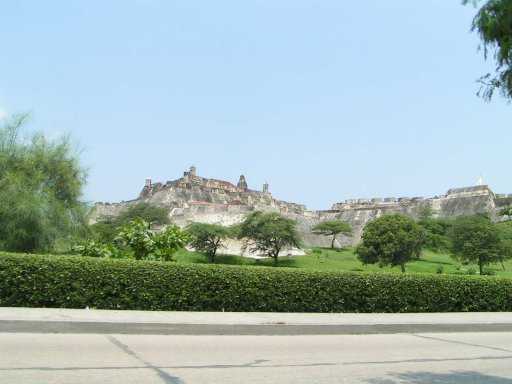
"Castillo de San Felipe de Barajas". This is the biggest military construction in the Americas, and was used 1536-1657.
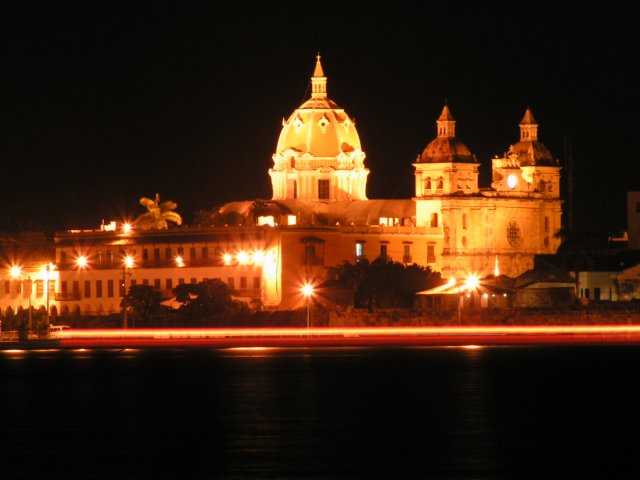
"Iglesia San Pedro Claver", built in 1580 has a cloister and museum dedicated to the life of Saint Pedro Claver, whose bones are exhibited inside the church under the main altar. This photo taken from Gilana in our slip on the Club de Pesca dock. (6 second time exposure at f3.2 10x optical zoom) The red stripe is a navigation light of a passing boat.